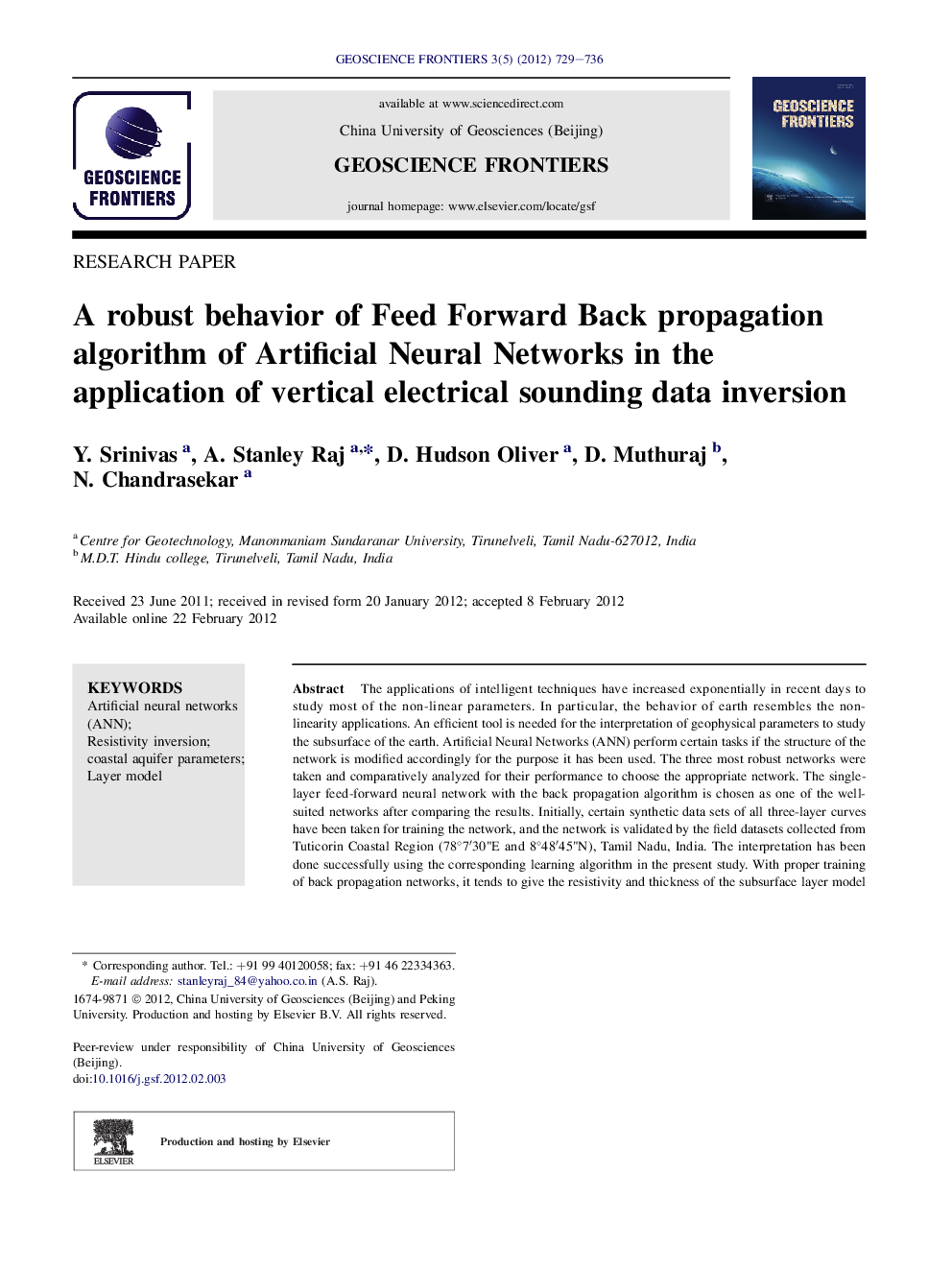| Article ID | Journal | Published Year | Pages | File Type |
|---|---|---|---|---|
| 4681843 | Geoscience Frontiers | 2012 | 8 Pages |
The applications of intelligent techniques have increased exponentially in recent days to study most of the non-linear parameters. In particular, the behavior of earth resembles the non-linearity applications. An efficient tool is needed for the interpretation of geophysical parameters to study the subsurface of the earth. Artificial Neural Networks (ANN) perform certain tasks if the structure of the network is modified accordingly for the purpose it has been used. The three most robust networks were taken and comparatively analyzed for their performance to choose the appropriate network. The single-layer feed-forward neural network with the back propagation algorithm is chosen as one of the well-suited networks after comparing the results. Initially, certain synthetic data sets of all three-layer curves have been taken for training the network, and the network is validated by the field datasets collected from Tuticorin Coastal Region (78°7′30"E and 8°48′45"N), Tamil Nadu, India. The interpretation has been done successfully using the corresponding learning algorithm in the present study. With proper training of back propagation networks, it tends to give the resistivity and thickness of the subsurface layer model of the field resistivity data concerning the synthetic data trained earlier in the appropriate network. The network is trained with more Vertical Electrical Sounding (VES) data, and this trained network is demonstrated by the field data. Groundwater table depth also has been modeled.
Graphical abstractFigure optionsDownload full-size imageDownload as PowerPoint slideHighlights► Vertical Electrical Sounding data in the Tuticorin region has been modeled for ground water occurrence and saline water intrusion. ► Artificial Neural Network program using Feed forward back propagation algorithm gains more advantage over conventional methods. ► Error percentage on comparing with the conventional method makes the program to extend on different type of field data. ► Synthetic Memory driven model forms the frame work of the algorithm to support any kind of rough field data. ► Saline water intrusion and ground water occurrence can be very well studied with well defined sub surface structural modeling.
